Pop Art was an art movement in the late 1950s that challenged traditional fine art principles. Its roots lie in Dadaism, a movement that redefined the term “art” itself, and as a reaction to Abstract Expressionism – the dominant art style at the time.
“Pop is everything art hasn’t been for the last two decades. It’s basically a U-turn back to representational visual communication, moving at a break-away speed… Pop is a re-enlistment in the world… It is the American Dream, optimistic, generous and naive.”
Jim Dine
This movement originated in the U.K. where a group of young artists, sculptors, and painters would hold regular meetings to discuss the possibility of infusing mass culture with high art. The movement traveled to the U.S. where notable artists like Andy Warhol, Roy Lichtenstein, and Claes Oldenburg put wings to the movement.
Pop artists Borrowed from mass culture as well as everyday objects. By using elements from advertising, comics, consumer goods, photos, and celebrities, they were able to create designs that were quickly recognized by their viewers.
After the 1970s, Pop Art started to fall in popularity but was soon picked up a decade later. Its focus on mass production, pop culture, and recycling of found material was just what was needed for artists like Jeff Koons and Takashi Murakami to revive the moment in true spirit – forming the Neo-Pop movement.
In this article, we’ll look at Pop Art in further detail discussing its origins, key artists, characteristics, influence, and the legacy it left behind for future art movements.
Origin of Pop Art
Pop Art shares its roots both in the U.K. and the U.S.
For ease of understanding, we can divide it into the British Side and the American Side.
In the United Kingdom
The characteristics and principles were mainly formed in the U.K. where a group of young painters, artists, and sculptors formed the Independent Group (IG) in 1952.
The IG included members Eduardo Paolozzi, and Richard Hamilton, architects Alison and Peter Smithson, and critics Lawrence Alloway and Reyner Banham. Together, they regularly held meetings to discuss the infusion between pop culture and art.
Their discussions usually centered around the possibility of using “found materials” in their artwork from popular American culture such as ads, comic strips, magazines, images of celebrities, sci-fi, and technology.
In its first meeting, in 1952, artist and co-founder, Eduardo Paolozzi presented the first piece of Pop Art: a series of collages titled: Bunk! This series borrowed imagery from American advertising and mass culture.
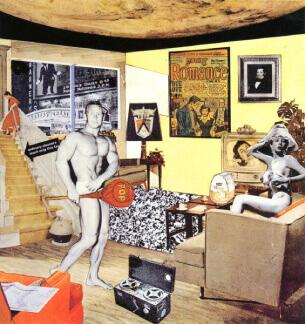
One collage that particularly stood out from the meeting, was Eduardo’s piece titled: “I was a Rich Man’s Plaything” which was not only one of the earliest pieces produced by the movement but also the first one to introduce the word “POP!”
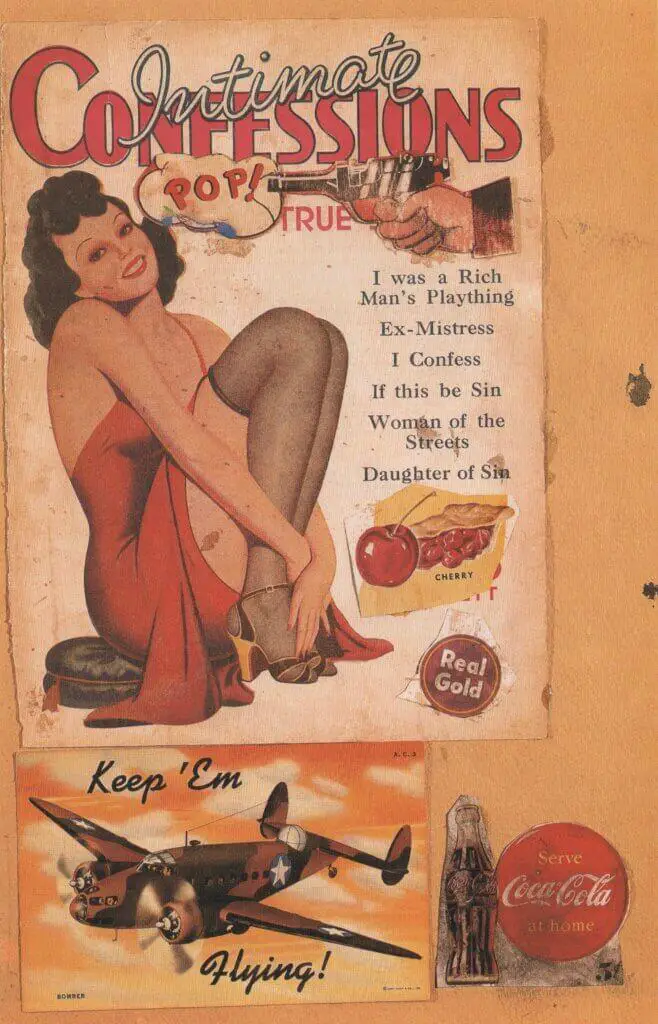
How was the term Pop Art formed? The artists from the IG used to refer to their new-found ideas as pop art informally in the mid-1950s. But, the word was first introduced formally in a published print ad titled “But Today We Collect Ads”
In America
Pop Art in America was first introduced in the early 1950s in New York and peaked in the 1960s. It was officially introduced in the “Symposium of Pop Art”, organized by the Museum of Modern Art.
Pop Art in America had a different upbringing than its origins in Britain. In the U.K. Pop Art was seen as an academic movement, a way to educate people about the influence of mass advertising, its effects on everyday life, and the ever-changing landscape of American culture.
On the other hand, American Pop Art was mostly seen as a reaction to Abstract Expressionism. Many of the American artists, especially in New York, did not think highly of Abstract Expressionism which was being taught in many schools of modern art, and had decided to go against the grain.
This led to some artists creating unique art pieces in the 1950s. What stood out were the use of flags and symbolism by Jasper Johns, and the famous artworks “Combines” by Robert Rauschenberg, and “Happenings” by Allan Kaprow. These popular artworks explored art from a different perspective as they started to incorporate found objects and mass popular culture within their projects.
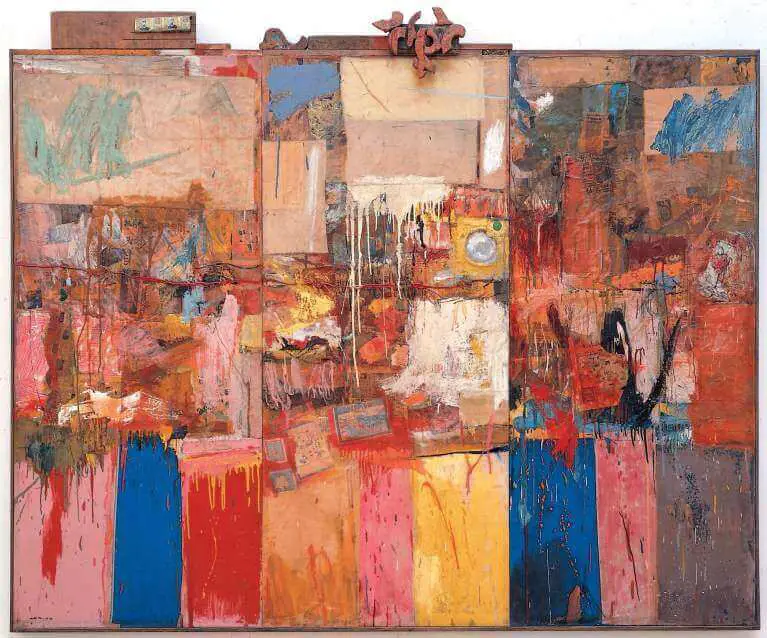
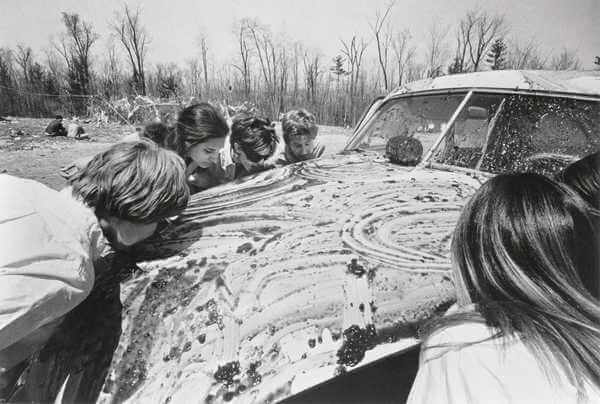
With the introduction of these artworks, their work started to form the beginnings of the Pop Art Movement, known as the Neo-Dada movement.
The Neo-Dada Movement later transformed into the Pop Art movement led by Pop Artists Roy Lichtenstein, Claes Oldenburg, James Rosenquist, and Andy Warhol in the 1960s – who built upon the ideas of the previous Neo-Dada Artists and blurred the lines between fine art and commercial art.
Differences in Style (American Pop Art vs. British Pop Art)
Since both regions had a different approach and purpose behind their Pop Art designs, it naturally meant that each had their own unique style as well.
- British Pop Art had a lighter and more detached approach to its artworks that often had themes of humor and sentiment, sometimes drawing inspiration from Romanticism
- American Pop Art was much more bolder and aggressive with themes of mass production and diversity in everyday life
Despite their difference in style, both focused on using elements from pop culture and appropriating imagery in their artworks. Both also drew inspiration from Dadaism, trying to redefine the meaning of the term “art” itself.
Key Artists of Pop Art
Many Pop Artists emerged in the revolutionary Pop Art movement, however, as we discussed the movement itself could be divided into distinct phases.
First was the formation of the Independent Group in Britain, where the artist Eduardo Paolozzi presented his first Pop Art piece. Then, the so-called Neo-Dada movement was formed with the initial works of Jasper Johns, Robert Rauschenberg, and Allan Kaprow. Finally, this translated to the Pop Art style of Andy Warhol, Roy Litchenson, and Claes Oldenburg that we know today.
Now, let’s go through a brief description of these artists and look at some of their famous works.
Eduardo Paolozzi
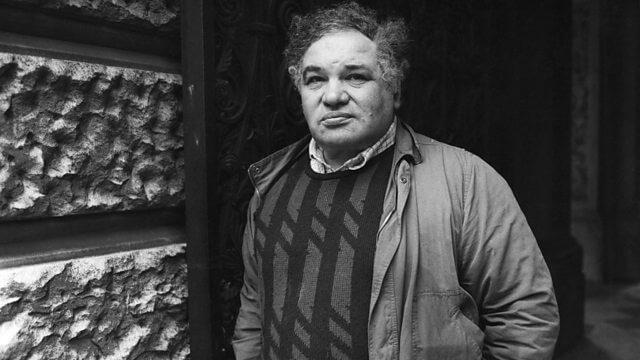
Eduardo Paolozzi, a British artist of Italian descent, was a pioneering figure in the Pop Art movement. He had a unique ability to blend elements of popular culture, consumerism, and technology into his artworks.
One of his iconic works is the collage series titled “Bunk!” (1952), which incorporated imagery from American magazines and science fiction. It’s considered one of the earliest examples of Pop Art.
Paolozzi’s early collages laid the foundation for Pop Art by exploring the mass production and consumption of imagery from popular culture.
Jasper Johns: Master of Symbolism
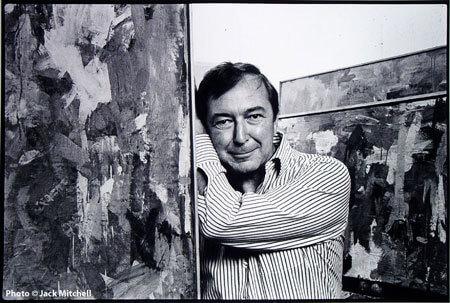
Jasper Johns is an American artist known for his use of everyday objects and symbols in his art. He often employed techniques like encaustic painting and collage.
“Flag” (1954-1955) is one of his most famous works, depicting the American flag. This piece challenged traditional notions of art and representation.
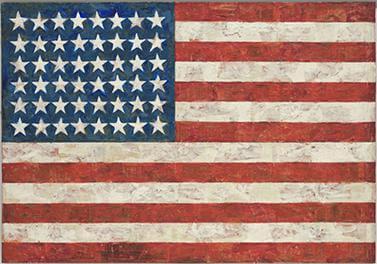
Johns’ focus on common symbols and objects, like flags and targets, was a precursor to Pop Art’s fascination with ordinary items as subjects for art.
Robert Rauschenberg
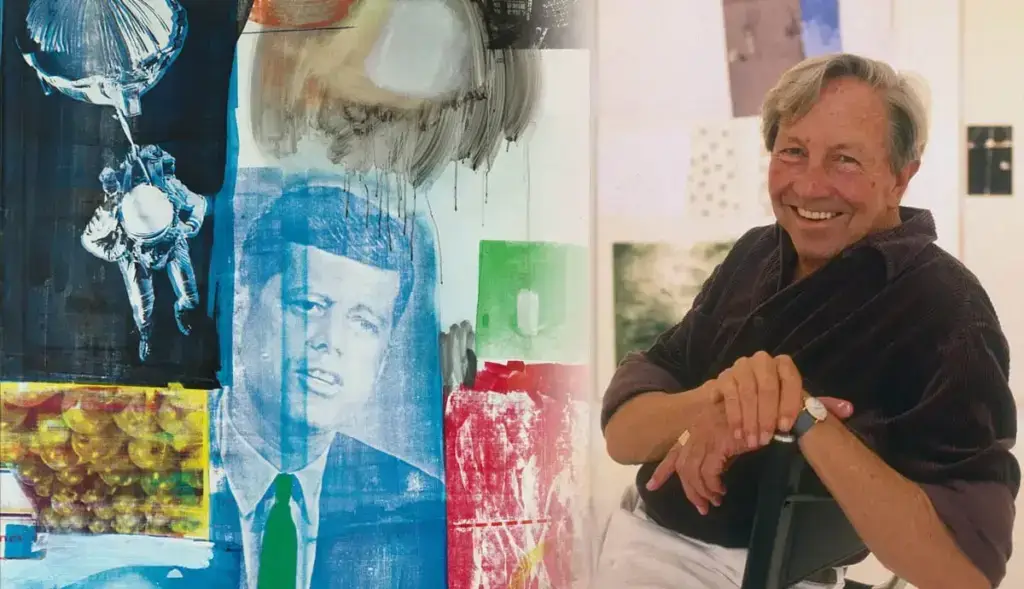
Robert Rauschenberg was an American artist who bridged the gap between Abstract Expressionism and Pop Art. He was known for incorporating found objects into his art.
“Erased de Kooning Drawing” (1953) is a famous work where Rauschenberg requested a drawing from Willem de Kooning and then proceeded to erase it. This challenged the concept of authorship and originality. Another of his popular work, Retroactive II, was another piece that incorporated Pop Art principles.
Rauschenberg’s incorporation of everyday objects and his experimental approach to art laid the groundwork for the Pop artists who followed him.
Allan Kaprow
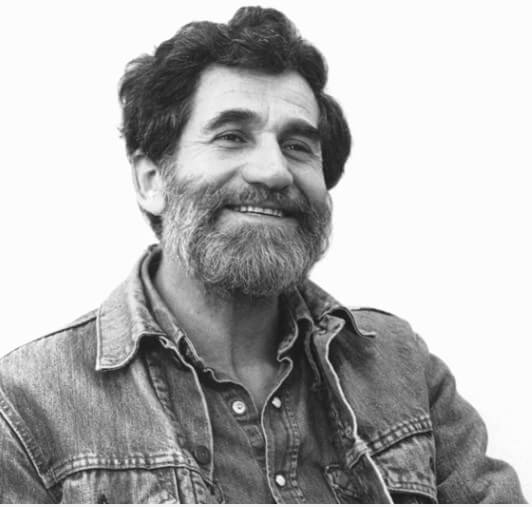
Allan Kaprow was an American artist and a key figure in the development of “Happenings,” a form of performance art that often involved audience participation.
Kaprow is known for his involvement in organizing and participating in various Happenings during the 1950s and 1960s. One of the most famous was “18 Happenings in 6 Parts” (1959).
While not a traditional Pop artist, Kaprow’s Happenings were influential in breaking down the boundaries between art and everyday life, a central theme in Pop Art
Andy Warhol: The King of Pop
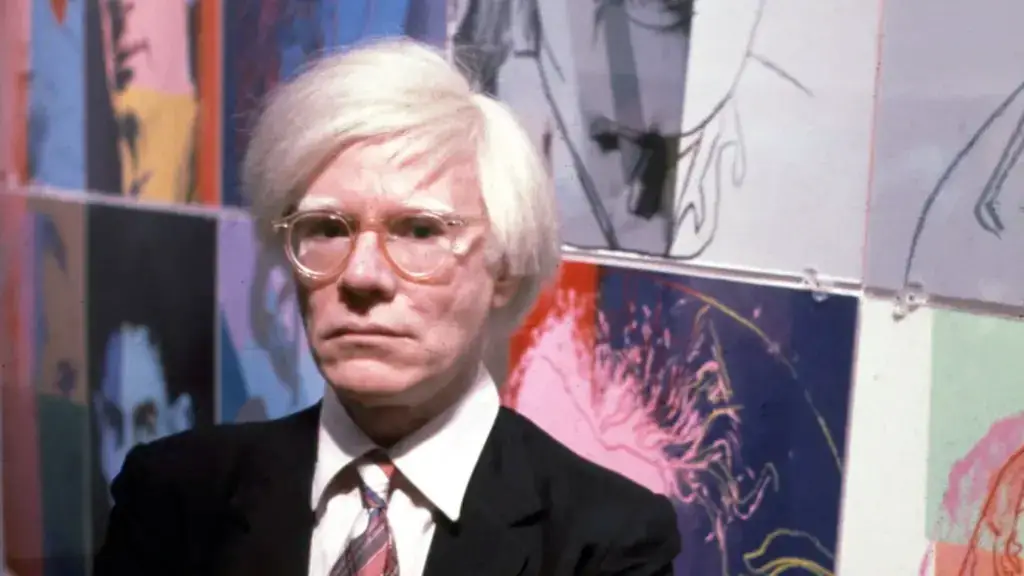
No discussion of Pop Art is complete without mentioning Andy Warhol, often referred to as the “father of Pop Art.”
Andy Warhol was an American artist, director, and producer who became a central figure in the Pop Art movement in the 1960s. He was born in Pittsburgh, Pennsylvania, and initially worked as a successful commercial illustrator before transitioning to fine art.
Warhol’s obsession with celebrity culture and consumerism propelled him to create iconic works such as “Campbell’s Soup Cans” (1962). This series of paintings elevates the mundane soup can to the realm of high art, blurring the lines between commercialism and creativity.
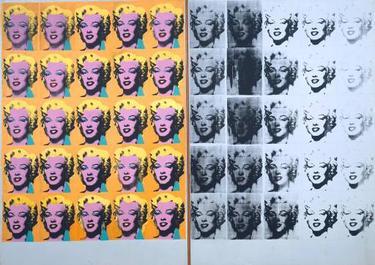
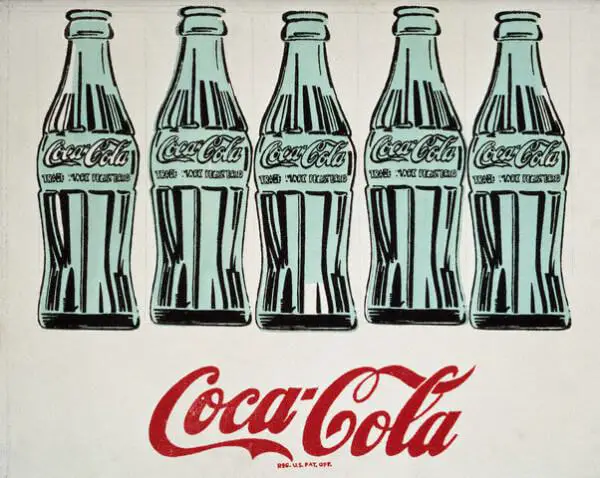
Roy Lichtenstein: Comic Culture in Canvas
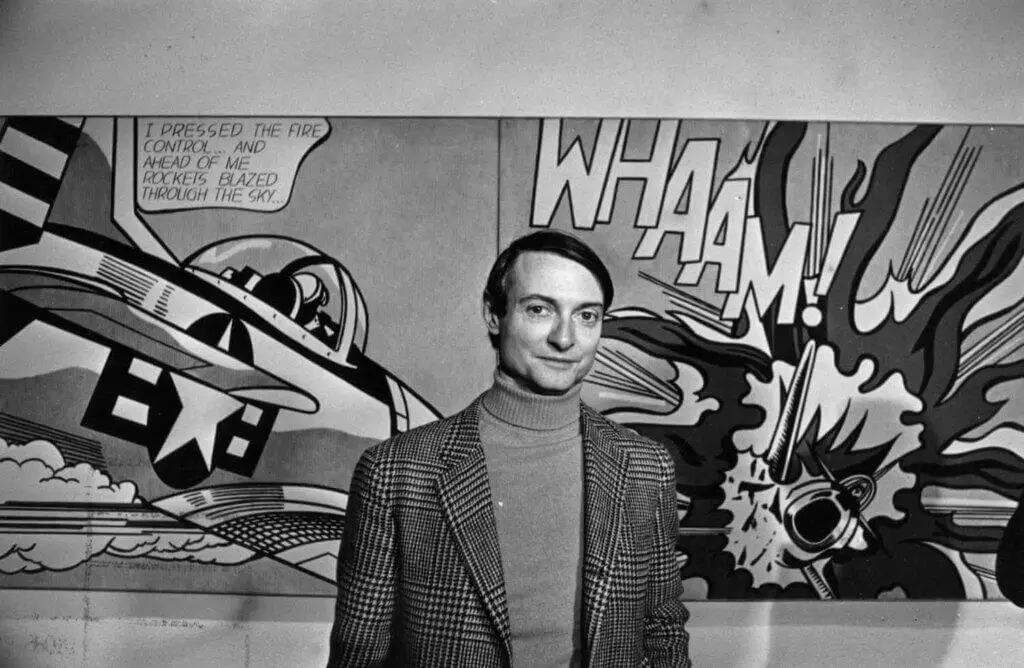
Roy Lichtenstein’s works often mimic the style of comic book panels, reinterpreting popular culture through the lens of fine art. “Whaam!” (1963) is a striking example, depicting a fighter jet firing a missile in a style reminiscent of comic book frames.
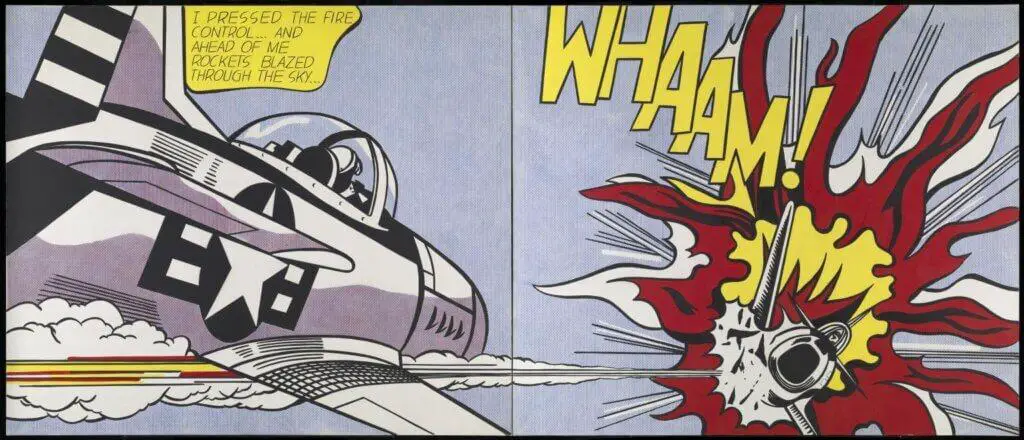
Lichtenstein’s meticulous replication of comic book techniques challenged the traditional boundaries of artistic mediums.
Claes Oldenburg: Playful Exaggerations
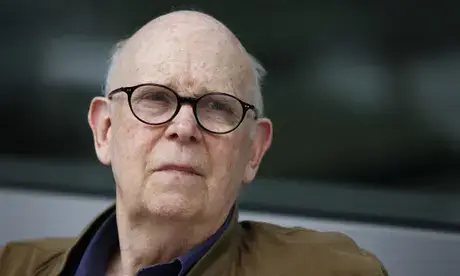
Claes Oldenburg’s oversized sculptures of everyday objects, such as “Giant Three-Way Plug” (1970), added an element of whimsy to Pop Art. By enlarging mundane items, Oldenburg invited viewers to reconsider their surroundings with a sense of childlike wonder.
Characteristics of Pop Art Design
We’ve got a general sense of what Pop Art was and how it started, but what makes art “Pop Art”?
Richard Hamilton nicely summarized the characteristics of Pop Art design in a letter he sent to his students. The letter read:
“Popular (designed for a mass audience), Transient (short-term solution), Expendable (easily forgotten), Low-cost, Mass-produced, Young (aimed at youth), Witty, Sexy, Gimmicky, Glamorous, Big business”
Richard Hamilton
These may seem a bit vague, especially if you’re trying to recreate the Pop Art aesthetic for one of your graphic design projects. So, to understand them better, we can break it down into the following terms:
- Pop culture
- Mass production
- Repetition
- Appropriation of imagery
- Bold colors
Let’s discuss these in detail with some examples:
Pop Culture
Starting from Britain, most of the artists associated with the Pop Art movement were determined to move away from traditional artistic expression. A bold move from the Independent Group was to take inspiration from American culture that appealed to the masses.
Pop culture basically refers to whatever was popular at the time. That’s why when we talk about Pop Art, you’d instantly visualize the half-tone prints of Marylin Monroe or Elvis Presley made by Andy Warhol.
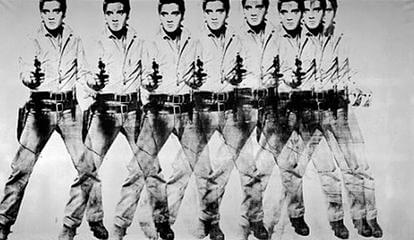
Mass Production
As consumer culture grew in America, Pop Artists were keen to produce artworks that could be mass-produced and distributed. Their focus on borrowing images from various mediums, designing from everyday objects, and using newer technologies led them to quickly create imagery for mass consumption.
“Buying is more American than thinking, and I’m as American as they come.”
Andy Warhol
They even utilized new materials like:
- Acrylic paints
- Plastics
- Photographs
- Fluorescent and metallic colors
When it came to the production of the imagery, they adopted the use of new technologies and mass-production methods including:
- Photography
- Half-tone printing
- Fabrication
- Serials
Repetition
Closely linked to mass production, repetition was also an important element in some Pop Art collages and commercial imagery.
Andy Warhol was a pioneer and one of the first Pop Artists to introduce this new method of presentation. His famous works including the Marilyn Monroe and Elvis collage, Coca-Cola poster, Campbell’s Soup Cans, and Brillo’s packaging all made use of repetitive imagery to emphasize the message and give it a visual appeal.
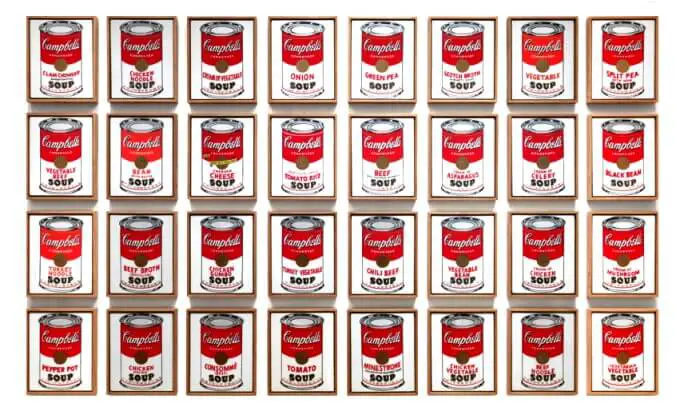
Appropriation of Imagery
Appropriation of imagery means taking an existing image from somewhere and applying it to your imagery. In simpler words, Pop Artists borrowed images from popular magazines, ads, cartoons, comic strips, and celebrities and appropriated them to create their own images.
Many popular art pieces that came forth during the Pop Art Movement used images appropriated from other sources.
Robert Rauschenberg’s “Retroactive” appropriated imagery from the U.S. space mission as well as an image of John Kennedy from his speech. Litchenson’s The Drowning Girl (1963) was appropriated from the DC Comics’ issue of Secret Hearts, and Warhol was notorious for appropriating images from celebrities, magazines, and ads.
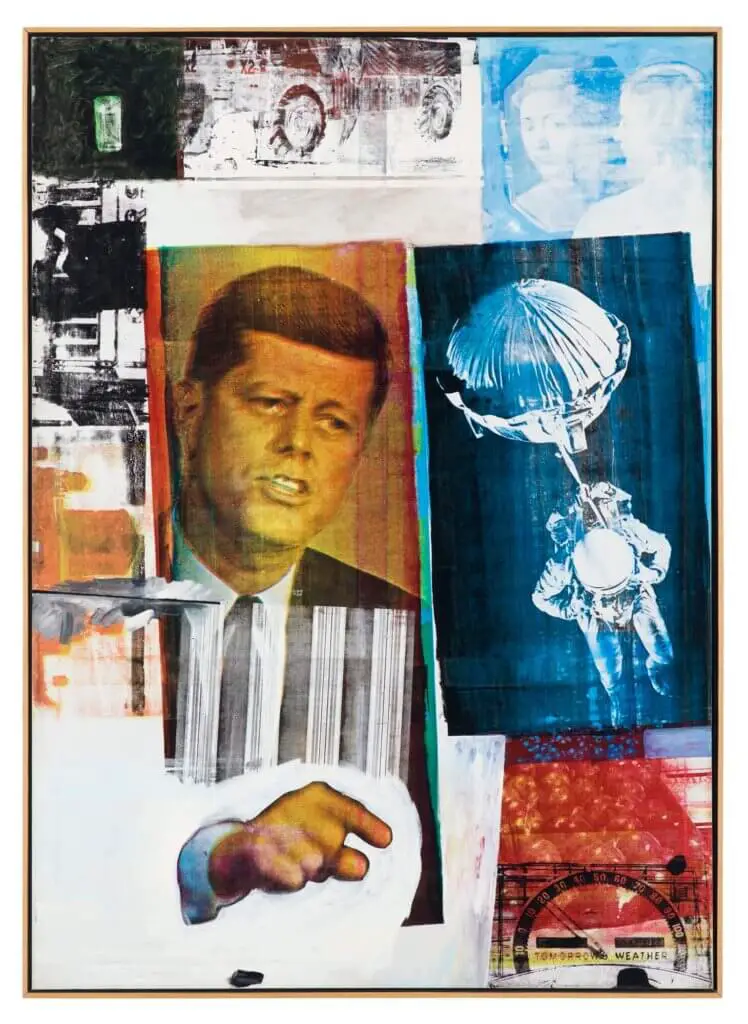
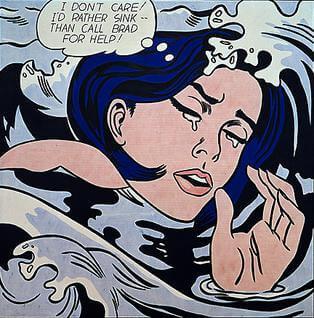
Bold Colors & Thick Outlines
Using a variety of bright and vibrant colors combined with thick outlines emphasized the message of Pop Art visuals. These elements were readily seen in Roy Litchenson’s paintings, namely his Drowning Girl (1963).
“[Abstract expressionists] put things down on the canvas and responded to what they had done, to the color positions and sizes. My style looks completely different, but the nature of putting down lines pretty much is the same; mine just don’t come out looking calligraphic, like Pollock’s or Kline’s.”
Roy Litchenson
Most of the Pop Art you see uses vibrant and eye-catching colors. Colors evoke certain emotions, and with Pop Art’s bold messaging, it was common to see bright colors like red, green, blue, and yellow, be used without shading or gradation.
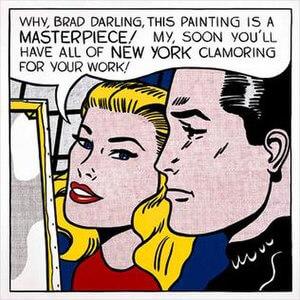
The thick outlines, on the other hand, were used to give the images a flat appearance or make them stand out amongst other appropriated imagery – usually in collage pieces.
Influence and Legacy
Pop Art had a major impact across all art fields from painting to graphic design and advertising to sculpting. By gaining a reputation as commercial, It became the dominant art form to use for ads or representing commercial materials – viewing art as a commodity – rather than an output of emotional expression.
It challenged the traditional artistic values of Abstract Expressionism similar to the Dada movement. This bold new step in a different direction, combined with the rising consumer culture, led it to quickly gain traction.
Pop Art’s POPularity seemed to have died down when less tangible forms of art such as the theatrical arts started to dominate the art scene in the 1970s. However, the movement’s ideas and principles saw a revival in the early 80s.
Pop culture was on the rise once again, and artists such as Jeff Koons had produced artwork that had significantly contributed to this Neo-Pop Art movement. His appropriation of Michael Jackson, the king of pop at the time, and other mass-produced commercial items like the Hoover vacuum, really gave Pop Art the push it needed to be relevant again.
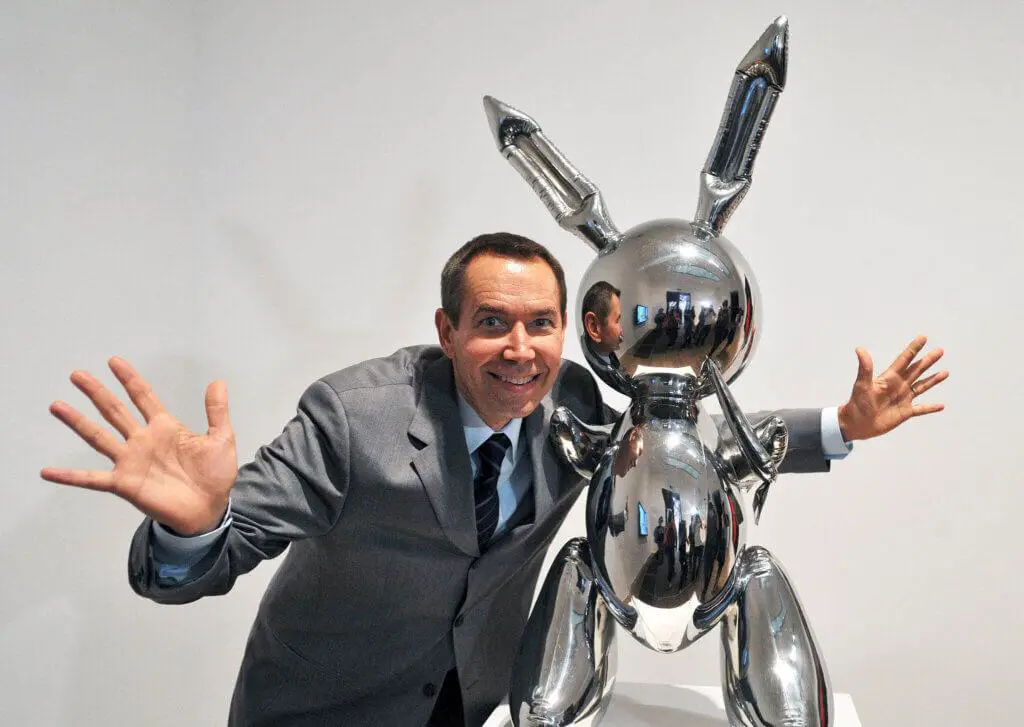
Takashi Murakami, a Japanese artist had also seen success with his Neo-Pop work of using imagery from Popular anime at the time and repurposing them into his own Superflat Style. He even partnered with Louis Vuitton and other fashion labels
Pop Art had and still has a massive influence on the way we design things and look at them. It showed us to not look at art just as a way of expressing ourselves but to use it as a tool to supplicate mass production.
“Once you ‘got’ Pop, you could never see a sign the same way again. And once you thought Pop, you could never see America the same way again.”
Andy Warhol
The movement left a lasting legacy and even went on to influence future movements such as Postmodernism and Street Art.
Conclusion
This article explores the fascinating world of Pop Art graphic design, delving into its origins, key artists, distinctive traits, influences, and lasting impact.
Emerging in the late 1950s, Pop Art boldly challenged established fine art norms, drawing inspiration from Dadaism and countering the dominant Abstract Expressionism of the era. It found its beginnings in both the UK, with the Independent Group (IG) seeking to blend popular culture with art, and the US, where artists like Jasper Johns and Robert Rauschenberg rejected Abstract Expressionism.
Pop Art thrived by incorporating mass culture, everyday objects, and vivid colors into its designs. Its enduring legacy extends far beyond traditional art forms, influencing visual art, design, advertising, and fashion.
This movement reshaped our perception of art, emphasizing its role in mass production and communication, leaving an indelible mark on contemporary creativity.